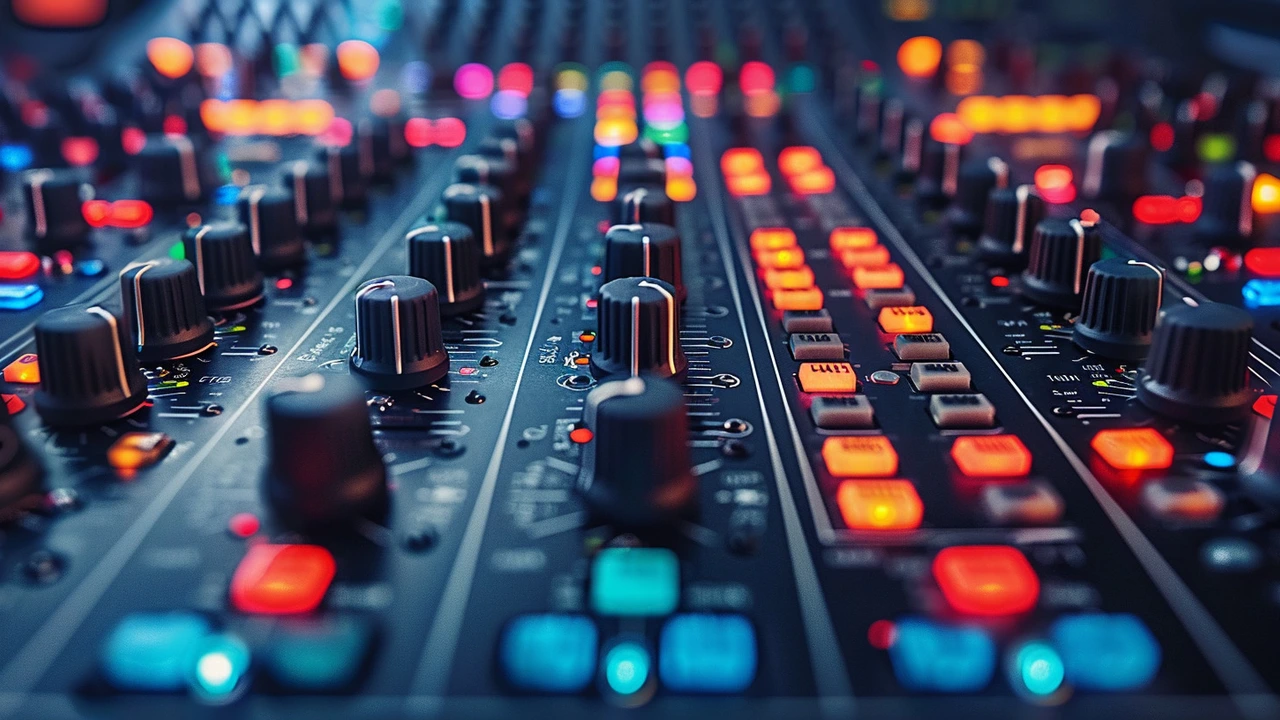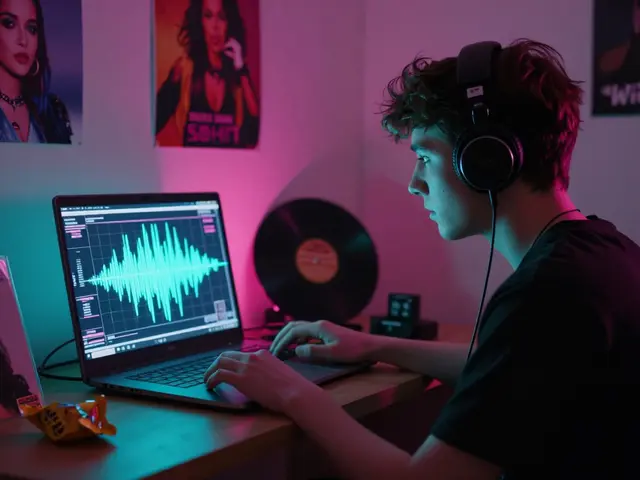Mixing music genres is a fascinating process that combines creativity with technical know-how. Whether you're an aspiring musician or just a music enthusiast, understanding how different styles can merge together opens up new avenues for artistic expression. In this article, we'll explore the origins, techniques, and modern-day examples of this unique musical craft.
By delving into the history and methodology of genre blending, you can gain insights into how your favorite cross-genre hits came to be. We'll also share practical tips for those looking to experiment with their musical boundaries. Join us as we uncover the art and science behind mixing music genres.
- Understanding Music Genres
- Origins of Genre Mixing
- Techniques for Blending Music Styles
- Modern Examples of Genre Fusion
- Tips for Aspiring Musicians
Overview of Popular Genres: Defining Characteristics
Classical music is renowned for its complexity and rich orchestration, often involving large ensembles like symphonies or operas. It's known for its structured compositions and intricate harmonies. Jazz, on the other hand, celebrates improvisation and artistic freedom, with musicians often creating spontaneous solos.
Rock music is driven by electric guitars, strong rhythms, and passionate vocals. It often conveys intense emotions and social messages. Hip-hop emphasizes rhythm and flow, with lyrics usually focusing on personal experiences, social issues, or storytelling.
"Music is the divine way to tell beautiful, poetic things to the heart." - Pablo Casals
Electronic music thrives on synthesized sounds and repetitive beats, often crafted for dancing. Folk music, deeply rooted in tradition, tells stories passed down through generations, usually with acoustic instruments.
The beauty of understanding these genres lies in recognizing their unique characteristics while appreciating how they can interlace. When you mix genres, you create new dimensions in music, inviting listeners to experience multiple emotions and cultural narratives simultaneously. This fusion can lead to groundbreaking art, resonating with diverse audiences and transcending typical genre boundaries.
Origins of Genre Mixing
Mixing music genres is not just a modern-day phenomenon; it has deep-rooted historical origins that highlight humanity's intrinsic desire for creative fusion. When cultures began to interact through trade, travel, and migration, different musical styles and traditions often collided and blended. One early example is the blend of African rhythms with European classical music in the Americas, which eventually gave birth to jazz. This genre, which relies on improvisation and complex rhythms, is a prime example of how disparate musical elements can come together to create something new and innovative.
The concept of cross-genre mixing also thrived during the 1960s and 1970s. The Beatles, for instance, were known for their genre-blending experiments. From incorporating Indian sitar music in songs like "Norwegian Wood" to the orchestral elements in "Eleanor Rigby," they showcased how different styles could coexist harmoniously within a single track. Another notable mention is reggae, which originated in Jamaica during the late 1960s and blended mento, ska, and rocksteady with American jazz and blues influences. Bob Marley, a key figure in reggae, masterfully brought these elements into mainstream consciousness.
Evolution Through Technology
The evolution of technology has significantly impacted the ease and scope of genre mixing. With the advent of electronic instruments and digital production tools in the 1980s, artists were no longer bound by the physical limitations of traditional instruments. This opened up unprecedented possibilities for genre fusion. Hip-hop, which emerged from the Bronx in the 1970s, is a notable result of this technological revolution. It blends elements of funk, soul, rock, and R&B, often using samples and electronic beats to create new compositions. DJs and producers pioneered these techniques, setting the stage for countless genre-crossing collaborations that followed.
"I see the future of music as being a union of diverse genres, breaking traditional boundaries to forge innovative art." – Quincy Jones
In more recent times, the spread of global internet access has led to a democratization of music production, allowing artists from different backgrounds to collaborate without needing to be in the same room—or even the same country. This global interconnectedness has accelerated the pace of genre blending, with artists constantly pushing the boundaries of what constitutes a particular musical style. EDM (Electronic Dance Music) is a prime example of a genre that thrives on blending elements from various influences like techno, house, and even classical music.
Throughout music history, the blending of genres has served as a catalyst for new movements and innovations. It reflects our inherent curiosity and the creative impulse to explore new sounds. As technology continues to advance and cultures grow even more interconnected, the potential for innovative genre fusion becomes virtually limitless. Understanding the origins and evolution of genre mixing provides valuable insights into the ever-evolving landscape of the music world, and it inspires both listeners and creators to broaden their own musical horizons.
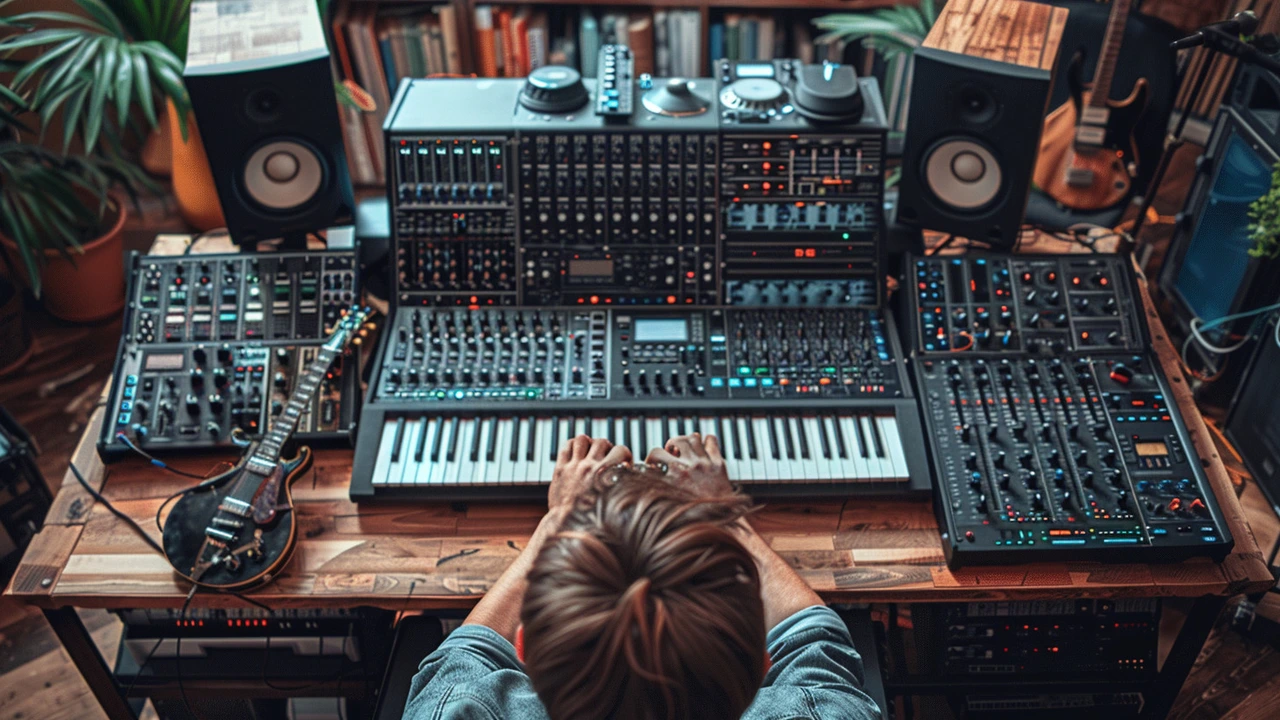
Techniques for Blending Music Styles
The art of combining music genres requires both technical ability and a deep understanding of musical elements. One crucial aspect is identifying common ground between the genres you wish to fuse. For instance, many pop songs share rhythmic structures with hip-hop, making the combination seamless. When merging genres, it's essential to scrutinize the tempo, key, and rhythm of the pieces involved. These three factors often determine how naturally the songs blend.
An effective technique is to start with a base track from one genre, then layer elements from another genre over it. This method ensures that the foundational rhythm and melody remain intact while introducing new sounds. It's also wise to experiment with instrumentation. Instruments like the synthesizer and drum machines are versatile and can adapt to various styles. Sampling, a process where short sections of music are looped or manipulated, is another excellent tool for creating a hybrid sound.
Using contrasting elements within a composition can also add an exciting dynamic. For example, combining the orchestral strings typically found in classical music with the sharp beats of electronic dance music (EDM) can create an unexpected and pleasing fusion. Pay attention to how different instruments interact within the mix. Balancing the volume and equalization settings ensures none of the components overshadow the others.
Collaboration is another powerful method for genre blending. When musicians from different backgrounds come together, their unique styles and perspectives often result in innovative sounds. Take the collaboration between Linkin Park and Jay-Z as an example. Their album "Collision Course" masterfully merges rock and hip-hop, showcasing the potential of collaborative efforts.
Technological advancements have also made genre blending more accessible. Digital audio workstations (DAWs) like Ableton Live and FL Studio provide musicians with countless tools to experiment with sounds. These platforms offer a wide range of plugins that simulate different instruments and effects, making it easier to craft unique genre combinations. Producers often use automation features within these tools to transition seamlessly between genres within a single track.
Another useful tip is to study tracks that have successfully blended genres. By dissecting songs like "Old Town Road" by Lil Nas X, which merges country and rap, or "Numb/Encore" by Linkin Park and Jay-Z, musicians can gain valuable insights into the process. These examples illustrate how changes in tempo, key modulation, and rhythm pattern can make all the difference.
According to renowned producer Rick Rubin, "The key to creating something unique lies in understanding and respecting the roots of each genre while finding a fresh way to merge them."
Finally, don't shy away from experimentation. Some of the most exciting genre blends come from trial and error. Use your DAW to play around with different combinations, and don't be afraid to think outside the box. Sometimes unexpected pairings can yield the most compelling results.
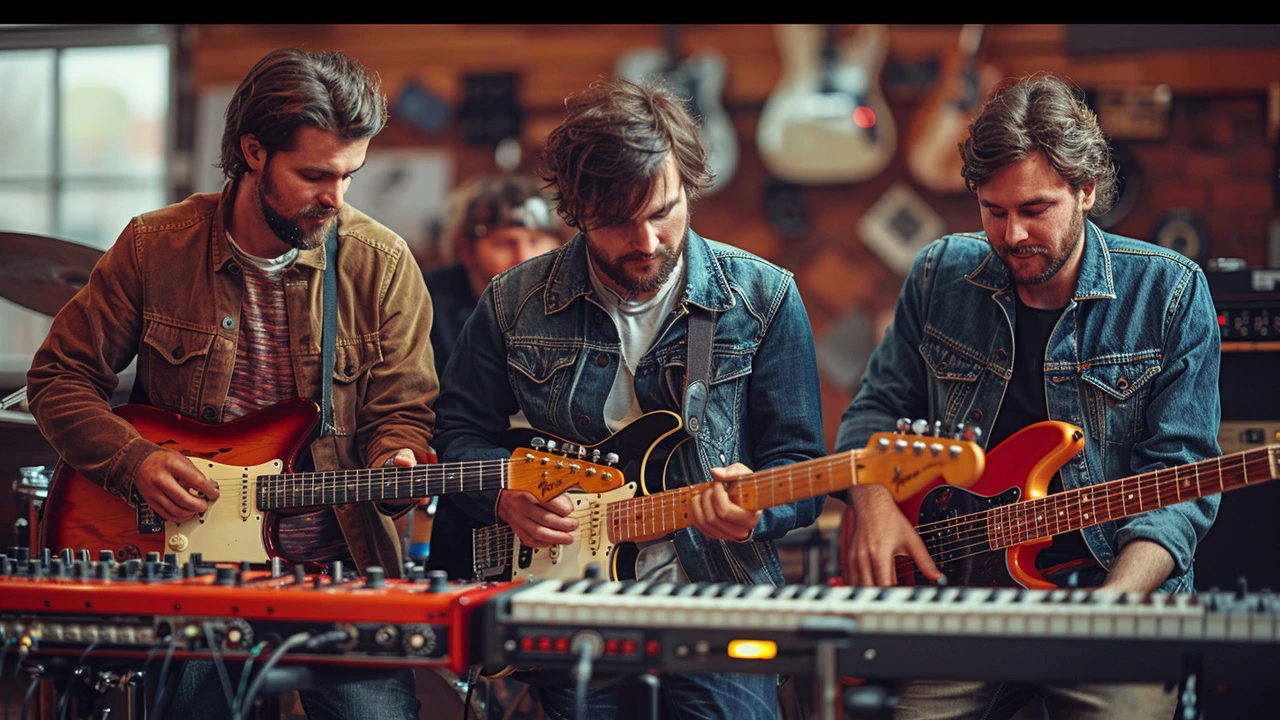
Modern Examples of Genre Fusion
In recent years, the music world has seen an explosion of genre fusion, where artists blend diverse styles to create something unique and often groundbreaking. One notable example is Billie Eilish, who effortlessly mixes pop, electronic, and indie sounds. Her debut album, "When We All Fall Asleep, Where Do We Go?" captivated audiences globally with its eclectic mix of horror aesthetics and catchy beats.
Another prime example is the work of Lil Nas X. His hit song "Old Town Road" merged country and rap, creating a viral sensation that topped the Billboard Hot 100 chart for a record-breaking 19 weeks. By collaborating with country artist Billy Ray Cyrus, Lil Nas X managed to meld genres in a way that resonated with a wide audience, bringing a fresh sound to the airwaves.
The rise of K-pop also illustrates the power of blending genres. Groups like BTS and BLACKPINK seamlessly integrate elements of hip-hop, R&B, and electronic dance music (EDM) into their tracks. This genre-blending is not just a stylistic choice but a strategy to broaden their appeal across different cultures and demographics. Their success on global music charts is a testament to how effective this approach can be.
"Genre fusion reflects the dynamism of the modern music industry, where artists are no longer constrained by traditional boundaries," says music critic Jessica Hopper.
Further, artists like Post Malone have made a career out of genre-blending. His music effortlessly combines rock, hip-hop, and pop elements. Albums like "Beerbongs & Bentleys" not only earned him numerous awards but also showcased his versatility and ability to transcend musical boundaries.
The list wouldn't be complete without mentioning Rosalía, the Spanish singer who has brought flamenco into the modern era by infusing it with pop, reggaeton, and R&B. Her album "El Mal Querer" is a masterpiece of cultural fusion, which has garnered her international acclaim and introduced many to the flamenco genre in a contemporary context.
Additionally, the world of electronic music has seen genre fusion with producers like Flume and Kaytranada who infuse house, hip-hop, and soul into their sets and productions. This blending creates a dynamic listening experience that constantly evolves, keeping the listeners engaged and entertained.
These examples point to a larger trend in the music industry where the lines between genres are becoming increasingly blurred. This not only allows for more creative expressions but also reaches a broader audience by catering to diverse tastes. With advancements in technology and the global reach of the internet, the future of genre fusion looks incredibly promising.
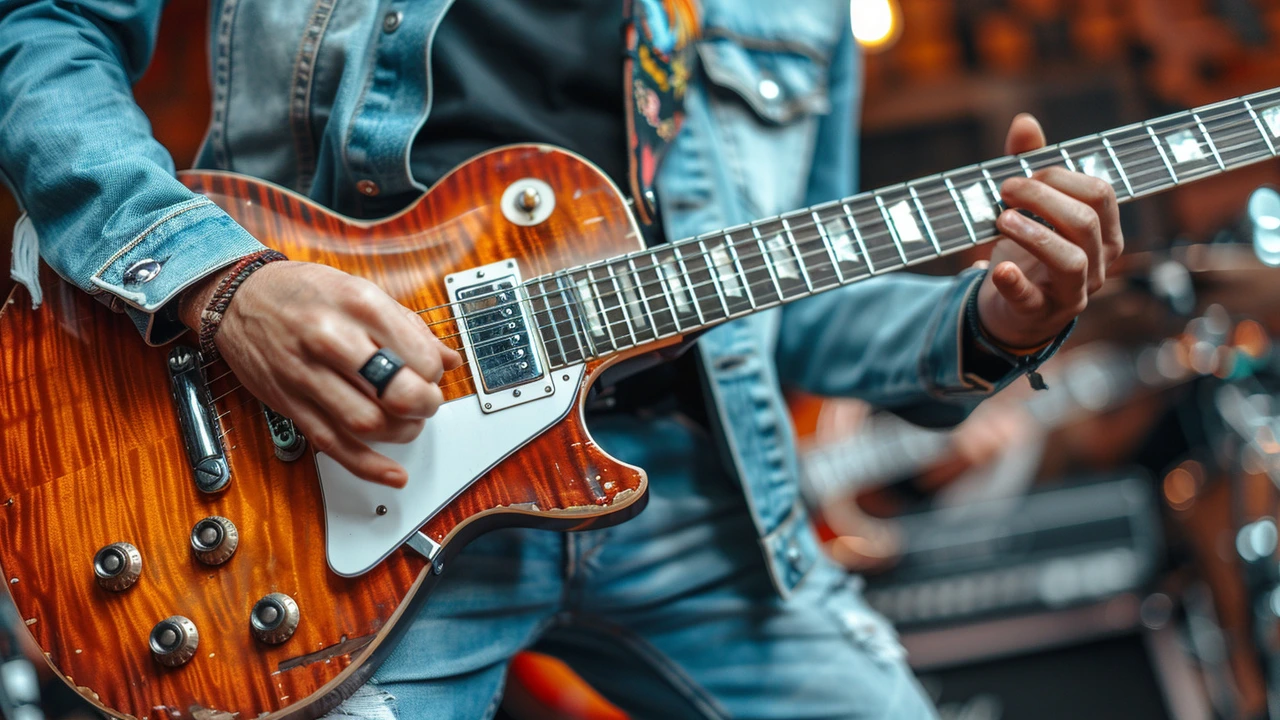
Tips for Aspiring Musicians
Embracing genre blending can be an exhilarating journey for any aspiring musician. It opens up a wealth of creative opportunities and allows you to carve out a unique sound. Here are some practical tips to help you get started:
Understand Your Core Genres
Before you begin mixing genres, it's crucial to have a deep understanding of your core genres. Spend time immersing yourself in the different styles of music you're interested in. Study the foundational elements, such as rhythm, melody, and instrumentation. For example, if you're blending jazz with electronic music, familiarize yourself with the nuances of both genres, from classic jazz improvisation techniques to modern electronic production methods. Knowledge is your most potent tool in this creative process.
Experiment with Small Elements First
Mixing genres doesn't mean you have to overhaul your entire sound from the get-go. Start small by incorporating subtle elements of another genre into your primary musical style. For instance, you might add a reggae-inspired bassline to a pop song or use hip-hop drum patterns in a rock track. This gradual approach allows you to test how different components work together without overwhelming your creative process. By making minor tweaks, you can gauge audience reactions and refine your technique.
Collaborate with Other Musicians
Collaboration is a fantastic way to blend genres. Working with musicians who specialize in different styles can give you fresh insights and inspire new ideas. You can learn a lot from each other’s approaches, techniques, and perspectives. A notable example is the collaboration between classical pianist Lang Lang and pop icon Pharrell Williams, which resulted in a unique fusion of classical and pop music. Such partnerships can push you to experiment and innovate beyond your usual boundaries.
Use Technology to Your Advantage
In today’s digital age, technology is a massive advantage for genre blending. Music production software like Ableton Live, Logic Pro, and FL Studio offer endless possibilities to merge different sounds. Use these tools to sample, loop, and manipulate elements from various genres. Online platforms like Splice also provide a vast library of sounds that can help you incorporate different styles into your music. Don’t be afraid to experiment with digital tools to find your unique blend.
“The only way to make sense out of change is to plunge into it, move with it, and join the dance.” – Alan Watts
Stay True to Your Artistic Vision
While experimenting with different genres, it's essential to stay true to your artistic vision. Blending music styles shouldn't feel forced; it should complement and enhance your original sound. Be authentic and let your creativity flow naturally. Remember that some of the greatest musical innovations have come from artists who were unafraid to push boundaries while staying true to their core identity. Trust your instincts and let your passion guide you.

